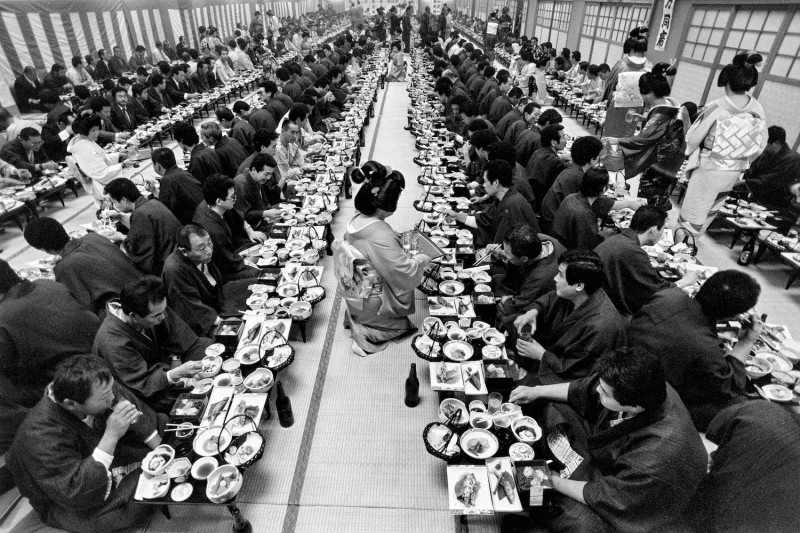A Yakuza Syndicate Celebrates the New Year
A Yakuza Syndicate Celebrates the New Year
Alberto Venzago
May 20, 2021

Pictures were taken, the likes of which the general public at the time had never seen before. In the eighties, Alberto Venzago and his Leica got closer to the Japanese Yakuza than any other photographer had managed, until then. He documented their meetings and their celebrations; and also took his camera into their private sphere, when they were bathing or being tattooed.
From today's perspective, it is even more incredible that the photographer was able to gain this direct insight into the structure of a "family" at that time. He was able to manage it, thanks to his characteristic cheerful impudence and, above all, because he had gained their trust. “It took six months till I made my first contact, and a further six months were to pass before I took the first picture,” the photographer remembers. It took Venzago a total of five years and a lot of patience, but the outcome was one of his greatest reportages ever. As a foreigner, he enjoyed a certain advantage: the eye of an outsider, without too much knowledge concerning the actual authority and significance of the powerful syndicate structure. The Yakuza, Japan's mafia, had more that 100,000 members at the time, making it the largest criminal organisation in the world. It controlled drug and arms trafficking, prostitution and gambling; yet, it earned even more money in real estate transactions.
In the beginning, the 'guest' was under very close scrutiny, as the family tried to find out what interest the Swiss photographer might have in getting to know their gang structure. The more withdrawn Venzago remained, the greater the trust became; and the easier it was for him to finally capture the everyday life and rituals of the Yakuza. “My aim was to move around like a shadow,” the photographer explains.
LFI 04/2021 presents a selection of Alberto Venzago's work.
A large exhibition of the photographer's work, titled Alberto Venzago. Taking Pictures – Making Pictures, opens at the Museum of Design in Zurich, on July 9, 2021.
Alberto Venzago+-
was born in Zurich on February 10, 1950. After studying Remedial Education and Clarinet, he decided in his mid-twenties to become a self-taught photographer. He gained rapid success, moving effortlessly between photo-journalistic documentation, free artistic work, and advertising photography. He also works as a film director. More

